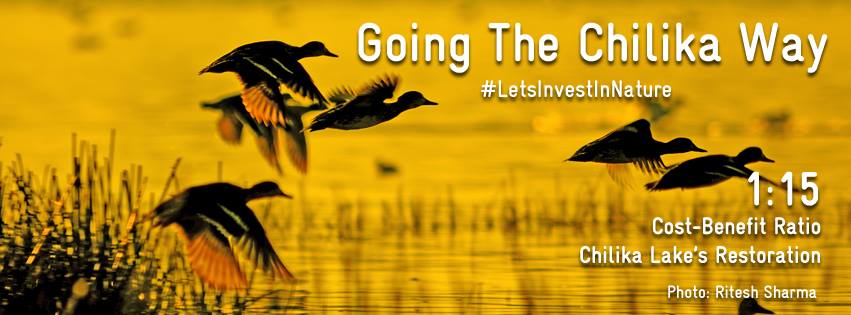Ritu Bhardwaj: Spanning over 1,165 sq km, the Chilika Lake is Asia’s largest saltwater lake. Over 200,000 fishers and 400,000 farmers depend on the lake for their livelihood. But what makes this lake stand out is its biodiversity.Over a million migratory birds winter here, making it a bird watcher’s paradise in India. The fact that the lake also happens to be the biggest breeding ground for flamingos in the world might also have something to do with its spectacle. This pear-shaped lake, connected to the Bay of Bengal, is one of the only two lagoons in the world to support Irrawaddy dolphins, which often weave in and out of the lake. Due to these unique characteristics, the Chilika Lake was designated as a wetland of international importance–a Ramsar site under the Convention on Wetlands by the Government of India in 1981.
But between the years 1950 and 2000, increased channelisation of floodplains, agriculture, and reduced forest cover led to excessive siltation in the lake. The siltation eventually choked the lagoon’s connectivity with the Bay of Bengal and severely degraded the ecology of the Chilika. It was a downward spiral for the Chilika–going from a thriving living entity to a swamp bereft of all its codependent ecosystems.
Realising the gravity of the situation and the repercussions it may have on the local and extended environment, the Chilika was flagged by eco-watchers as a wetland in acute need of attention. In 1991, the Government of Odisha created the Chilika Development Authority as a nodal agency for the ecological restoration of the lake. Between 1993 and 2001, urgent efforts to restore Chilika’s ecological balance were undertaken. In 2000, upon the recommendation of the experts and stakeholders, a new mouth to the Bay of Bengal was cut open to breathe life back into the wetland.
In their study of the Chilika Lake, the experts have found that while Rs 1.6 billion has been spent on the restoration of the lake so far, the results of these efforts are 15 times over the investment. Because of the restoration of the lake, the fishers at the Chilika now yield business worth Rs 1.46 billion. While the value of tourism brought by migratory birds and the Irrawaddy dolphins is estimated to be Rs 3.38 billion, the value of aquatic vegetation is Rs 34 million and inland navigation is a business worth Rs 14 million. The lake contributes six percent of the sate’s foreign exchange earnings, hence making it a notable asset for Odisha.
Considering the new challenges of increased salinity in the Chilika Lake with the opening of new mouths into the Bay of Bengal, a cost-benefit ratio of 1:15 not only makes a strong case for the restoration of this lake but also a model for other wetlands in India to follow. ‘Lets Invest in Nature’ (#LetsInvestInNature), a special series designed by Indo-German Biodiversity Programme, is dedicated to estimating and mainstreaming the true economic value of biodiversity in business-related decisions and policymaking.

